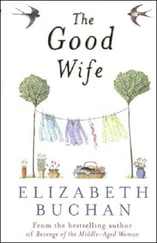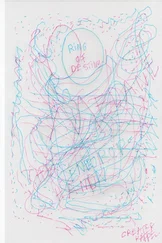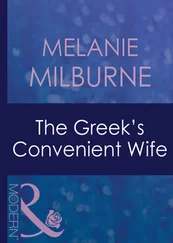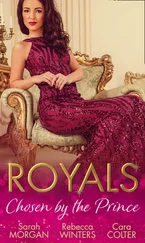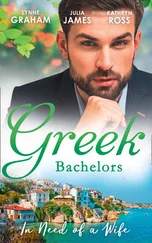For it is the one star in the sky whose bright, unwavering gaze reminds me most of him.
WHEN I FIRST HAD THE IDEA TO WRITE a novel about Anne Lindbergh, I found that people all had the same reaction: a gasp of recognition, followed by the inevitable, “Oh, I love the Lindberghs!”
So I went off to write the book—and ponder the question that wouldn’t let me sleep at night as I began to corral all the research into a manageable novel: “Just what do we all love about the Lindberghs?”
There’s the name recognition, of course; everyone has heard of them, from either history books or their collective body of writing. But as I began to assemble the threads of the story I wanted to tell, I realized that while everyone has heard of Anne Lindbergh, the nature of that recognition varies widely. The majority of people know vaguely about Charles’s importance in the history of aviation, but not many really understand the astonishing courage it took to do this at the time; the extraordinary significance of this feat to the world as we now know it.
And while other parts of the Lindberghs’ shared history might be individually recognizable—“Wasn’t their baby kidnapped?” “I always heard he was a Nazi.” “She was a writer, wasn’t she?”—I began to realize how very few people were familiar with the truly operatic scale of Anne Lindbergh’s life and marriage. This became my motivation: to tell her entire story; to try to understand the nature of this celebrated but mystifying marriage between entirely original individuals.
Most important, I wanted to make Anne the heroine of her own story, finally—as in memory (both her written accounts and the public’s perception), she is far too often overshadowed by the dominant personality that is Charles Lindbergh.
And, of course, he is a dominant personality in my story; it is impossible to make him anything but! He was a fascinating man, but a deeply flawed one; in the end, not the hero Anne—and the world—fell in love with, back when he was “Lucky Lindy.”
But while this is the story of a marriage, it’s primarily the story of a woman; a deeply intelligent, courageous, resilient woman. The things I learned about Anne Morrow Lindbergh as I read her diaries and biographies! The timid intellectual who, through marriage to the hero of the age, found she wasn’t so timid, after all. Actually, she was fearless; as the first American woman to earn a glider pilot’s license, she allowed her husband to hurtle her off the edge of a mountain like a slingshot. Through sheer determination, she became a confident navigator, one of the first licensed radio operators; she also became her husband’s copilot, the only person the most famous aviator of all trusted to steer him around the world on record-breaking exploratory flights.
This was the Anne whose story needed to be told, for few people today know anything about the pioneering aviatrix Anne.
But then there was the tragic—and more familiar—Anne. The woman who, along with her husband, was more hounded by the press than anyone in modern history, with the possible exception of Princess Diana. The Anne who had to wear disguises in order to go to the theater; the woman who was unable to answer her own front door because of all the strangers wanting to get a glimpse of her.
The Anne who, after her firstborn was kidnapped and murdered—tragically, publicly—had to suffer, until the end of her life, countless strangers claiming that they were her dead child. The Anne who had to grieve over this loss in private, because her husband forbade her to do so in public—or in his presence.
The Anne who never once saw her husband cry for his lost son.
And what about the frustratingly compliant Anne? The woman who tried to justify her husband’s isolationist (some say Nazi) leanings prior to World War II? The woman who saw what was happening to him, saw how wrong he was, but who hadn’t yet discovered she was strong enough to contradict him?
And then the ultimately resilient Anne; the woman who had to build an entire life for herself and her children when Charles all but abandoned them in his increasing unrest after the war. The woman who learned to talk back, to say no, to tell her own story, famously, in the beloved Gift from the Sea . The woman who had a surprising adulterous affair in middle age.
The Anne who, despite her public image as the model of a docile wife, refused to be buried next to her husband of forty-five years. And the husband who, despite his public image as the hero of his age, had three secret families—including seven additional children.
But did Anne know? Ah, that’s the question! She never spoke or wrote of this Charles Lindbergh. The Charles in her diaries is the Charles she wanted us to remember; the idol, the pure, heroic boy. I discovered that the diaries published in her lifetime were heavily edited by both Anne and Charles near the end of his life; even then, Charles was trying to shape his image using her words.
But I think she did know. And that in discovering this ultimate betrayal, she finally understood her marriage and her husband. She also recognized that she had been the strong one, all along. For the kidnapping truly broke Charles Lindbergh beyond repair; it can be seen as the explanation for all that he did after—the long absences, the tyrannical behavior toward his children and wife, the obsessive building and abandoning of homes, the restless search for causes. And finally, the secret families.
Whereas Anne—that shy ambassador’s daughter—was the one strong enough to hold her family together. She was the one who survived this epic journey intact, able to love and, ultimately, to forgive.
So. That question: Why do we all love the Lindberghs?
Because of Anne , I realized when I finished writing The Aviator’s Wife . Anne—tender, courageous, resilient Anne—is the reason we all “love the Lindberghs.”
NOW, FOR THE INEVITABLE truth versus fiction discussion! One thing I have learned after writing three historical novels is that there will always be readers who want to know what parts I imagined, and what parts actually happened. My answer, always, is: It’s the emotional truths that I imagine; the relationships, the reasons these historical figures do the things they do. I truly believe that the inner life can be explored only in novels, not histories—or even diaries and letters. For diaries and letters are self-censored even at the moment of writing them; it’s impossible to be absolutely honest with oneself.
For those who do care about the historical record, however, I will share the following:
The first flight that Anne and Charles take together in my book, unknown to anyone but themselves, is fictional. That is, there is no record of this flight; the first recorded instance of Anne flying with Charles is the second flight mentioned, the one she takes with her mother and sisters in front of the press.
The flight in which the plane turns upside down, losing a wheel on takeoff, is a compilation of many of the early flights before their marriage; they did actually lose a wheel on takeoff during a flight in Mexico after their engagement was announced, so I incorporated that into this fictional flight.
The basic details of their other historical flights, mentioned in this book, are taken from actual accounts.
The timeline of the kidnapping sequence is as historically accurate as I could make it, while I acknowledge there are many details that I left out. Again, this is a novel, not a blow-by-blow account; I was more interested in the emotion, the personal drama, than I was in giving a history lesson.
Читать дальше


